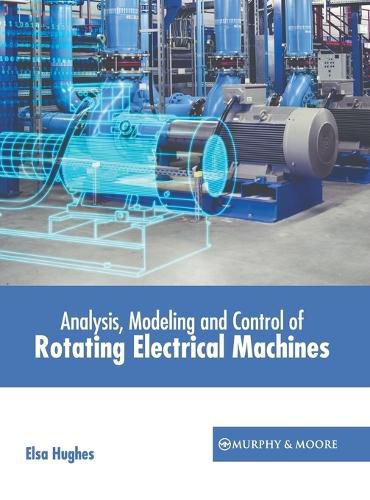Readings Newsletter
Become a Readings Member to make your shopping experience even easier.
Sign in or sign up for free!
You’re not far away from qualifying for FREE standard shipping within Australia
You’ve qualified for FREE standard shipping within Australia
The cart is loading…






Rotating electric machines are electric machines that are used to convert mechanical energy into electrical energy. There are three basic types of rotating electric machines, namely, the DC machine, the polyphase synchronous machine, and the polyphase induction machine. Steel, copper and aluminum are the three materials commonly used in manufacturing these machines. Rotating electric machines consists of two parts, the rotor and the stator. The rotor is the cylindrical rotating component whereas the stator is the annular stationary component. These components are made of a magnetic material, which conducts magnetic flux necessary for energy conversion process. In the case of synchronous and DC machines, the magnetic field is generated by field poles induced by the use of direct current. Rotating motors can be controlled by simple start/stop functions or may involve complex controls that regulate motor output parameters such as shaft speed and acceleration. This book includes some of the vital pieces of work being conducted across the world, on various topics related to the analysis, modeling and control of rotating electric machines. It aims to serve as a resource guide for students and experts alike and contribute to the growth of study on this subject.
$9.00 standard shipping within Australia
FREE standard shipping within Australia for orders over $100.00
Express & International shipping calculated at checkout
Rotating electric machines are electric machines that are used to convert mechanical energy into electrical energy. There are three basic types of rotating electric machines, namely, the DC machine, the polyphase synchronous machine, and the polyphase induction machine. Steel, copper and aluminum are the three materials commonly used in manufacturing these machines. Rotating electric machines consists of two parts, the rotor and the stator. The rotor is the cylindrical rotating component whereas the stator is the annular stationary component. These components are made of a magnetic material, which conducts magnetic flux necessary for energy conversion process. In the case of synchronous and DC machines, the magnetic field is generated by field poles induced by the use of direct current. Rotating motors can be controlled by simple start/stop functions or may involve complex controls that regulate motor output parameters such as shaft speed and acceleration. This book includes some of the vital pieces of work being conducted across the world, on various topics related to the analysis, modeling and control of rotating electric machines. It aims to serve as a resource guide for students and experts alike and contribute to the growth of study on this subject.